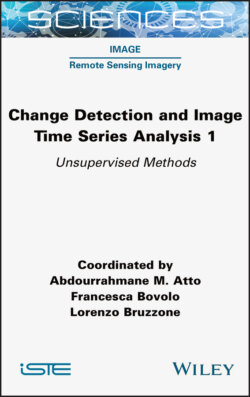Читать книгу Change Detection and Image Time-Series Analysis 1 - Группа авторов - Страница 28
1.5. Results and discussion 1.5.1. Results on the Xuzhou dataset
ОглавлениеThe 2D compressed change representation in the polar domain is shown in Figure 1.8, where six change clusters can be observed, indicating different change directions. Then, K = 6 is fixed in the considered CD methods for performing the multiclass CD.
The optimal segmentation scale was estimated by analyzing the GE values (see Figure 1.9(a)) and its logarithmic fitting results (see Figure 1.9(b)). The TGE was calculated and defined as 1 × 10−4, then the final segmentation optimal scale was obtained as 1,160.
From the detailed quantitative and qualitative analyses based on the obtained CD accuracy and error indices (see Table 1.2) and the obtained CD maps (see Figure 1.10), it can be observed that the proposed M2C2VA and SPC2VA approaches resulted in higher performance than the reference methods, with respect to the higher OA and Kappa values and smaller detection errors (see Table 1.2). In particular, SPC2VA achieved the highest accuracy (i.e. OA = 92.74% and Kappa = 0.7464), outperforming the other methods. Improvement can also be observed from the obtained change maps by comparing them with the reference map; the identified change targets are more accurate in the two proposed approaches (i.e. Figure 1.10(c) and (d)) than those in the two reference methods (i.e. Figure 1.10(a) and (b)). In two reference methods, S2CVA showed better performance than IR-MAD. As for the computational cost, the proposed SPC2VA approach exhibited efficient performance, which consumed less time than the proposed M2C2VA and IR-MAD, and similar or slightly more time than S2CVA (i.e. 8.91 s vs. 7.12 s), but yielding a significantly higher OA value (i.e. 92.74% vs. 87.74%).
Table 1.2. Multiclass CD results obtained by the proposed and reference methods (Xuzhou dataset)
